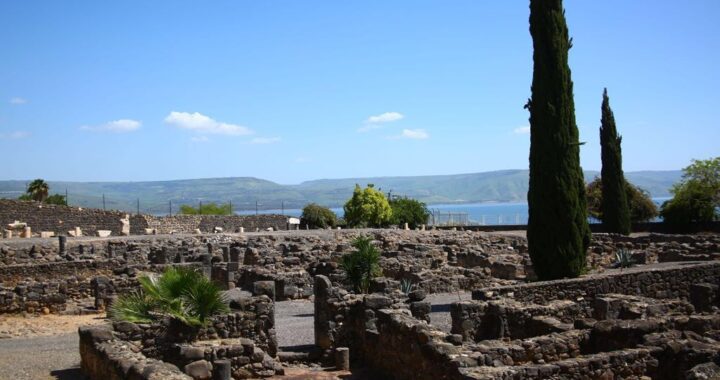Before me is a humorous “Casey” cartoon recording a conversation between Joe, the taxi driver, and Casey. “Casey, you know the guy who told me the world would end August 30?” “Yeah, Joe…” “..today he tells me it’s been moved up to November 4th…” “How come?” “…he said he changed religions.” This comic strip expresses a tragic truth: everyone seems to have a special date for end-time events. The 1980s seem especially destined to be the decade of the date-setters. Many are speculating concerning the dates of the Rapture and Second Advent.
Let us note, first of all, what some are saying about the Rapture, secondly what we can’t say about the Rapture and thirdly what we can say about it.
I. What Some Are Saying about the Rapture
William Miller, founder of Adventism, concluded that Christ was due to return in 1843. “Pastor” Charles Taze Russell, founder of the Jehovah’s Witnesses, posited the coming of Christ for 1914. Herbert W. and Garner Ted Armstrong taught that the Kingdom would begin in 1975. Rex Humbard predicted the Rapture for 1983. Hal Lindsey is dogmatic that “This generation is the one that will see…the return of Jesus Christ” (The 1980’s: Countdown to Armageddon, p.18). Peter Ruckman subscribes to a date of 1989 for the Rapture (Bible Believers’ Bulletin, April 1988, p.1).
The year 1988 has seen an unusual outburst of eschatological excitement and dabbling in date-setting. By far the most widely-publicized treatise of end-time speculation is a book by former NASA rocket engineer Edgar Whisenant. The book 88 Reasons Why the Rapture Will Be in 88—actually two books in one with On Borrowed Time on the flip side—has been distributed by the millions. It has gone through at least three editions which differ greatly in content. Whisenant is absolutely sure that “Rosh-Hash-Ana [sic.] 1988 is the exact end of the church age (11, 12 or 13 September 1988)” (88 Reasons. . . p.50, all quotes are from the second edition). He states that he has “unchallengeable proof that this book is correct and true” (p.8) and refers to his predecessors as “the wrong date setters of the past” (p.52). He just joined their ranks.
Whisenant has a date for virtually every Biblical event. He knows the earth was created in 4005 B.C. Adam was born [sic.] in the same year. Christ was conceived (!) on December 25, 5 B.C. and born on September 29, 4 B.C. Forcing his own chronological scheme on the Bible, he totally ignores the fact that Herod died on April 4, 4 B.C. Christ must have been born at least 40 days before Herod’s death.
Those who set dates are best refuted by the passing of the predicted day without the event occurring. Rarely does one fine the belated but honest admission that one was wrong and an asking of forgiveness from those who were led astray.
Since the September 1988 date passed without the expected Rapture, may we now expect a sequel volume: 99 Reasons Why the Rapture Will Be in 99? Sir Robert Anderson clearly discerns the harm these chronological date-setters cause to themselves, to others and to the cause of Christ:
- They have brought reproach on Scripture itself, [sic] and have given a stimulus to the jaunty skepticism of the day. We might have hoped that whatever else might be forgotten, the last words which the Lord Jesus spoke on earth would not be thus thrust aside: ‘It is not for you to know the times nor the seasons which the Father has put in his own power’ (Acts 1:7). But what was denied to inspired apostles in days of pristine faith and power, the prophecy-mongers of these last days have dared to claim; and the result has been that the solemn and blessed hope of the Lord’s return has been degraded to the level of the predictions of astrologers, to the confusion and grief of faithful hearts, and the amusement of the world (The Coming Prince, 11 th edition, pp. 131-132).
II. What We Cannot Say about the Rapture
A. We cannot say that Christ’s coming will be soon.
Certainly, Christ may come soon. Every believer has hoped that Christ would return during his lifetime. Paul, the Church Fathers and the Reformers anticipated that the Lord would return in their day. Believers today hope they are the generation that will experience the Rapture. Three things are obvious.
- In God’s eternal counsel the date for the Rapture has been set.
- Each day brings us one day closer to that glorious event.
- The signs of the times seem to indicate a soon coming.
B. We cannot say that we can predict the time or season of the Rapture.
One would think that date-setters would learn a lesson in humility from their disappointed predecessors. One could expect them to heed the Savior’s words concerning His Second Advent “that the day and hour knoweth no man, no, not the angels of heaven, but my Father only” (Matt. 24:36, cf. v. 42). If we could date the Second Advent, we could predict the Rapture seven years prior. In Acts 1:6–7 Christ leaves His disciples with the reminder that it is futile for them to guess and forbidden for them to know the times or seasons. An exact chronological sequence of the “period” and “points of time” from the Rapture to the Kingdom is precluded. The future is God’s property. He has revealed some things and concealed others (Deut. 29:29). The wresting from our Heavenly Father of the future which rightly belongs to Him is “devil inspired and eventually damaging or even destructive to all who pursue it” (Hyder, The Christian Handbook of Psychiatry, p.76).
Virtually all date-setters base their calculations on certain premises:
- World history can be divided into seven epochs of 1000 years each, corresponding to the seven days of creation week. This scheme, popularized by Larkin in his Dispensational Truth (p.16), places Adam around 4000 B.C., a date no longer tenable in light of historical and archeological evidence. Nor is there evidence that creation days are to be understood other than as literal days.
- The feast of days of Israel are a chronological chart for prophetic events. All would agree that the feast days are of typical significance and prefigure Christ’s ministry, “a shadow of things to come” (Col. 2:17). However, the chronological space between the feasts does not indicate anything of the time that would elapse between the events fulfilled in Christ.
- The “fig tree” of Matt. 24:32–34 represents Israel, and we are “this generation” that would see these things come to pass. Careful exegesis shows that the fig tree has no relation to Israel and “this generation” refers to individuals living in the tribulation period. Mayhue’s observations are worth noting:
Jesus was not using the fig tree to represent Israel . If you look at the parallel passage in Luke 21:29, Jesus illustrates the point with ‘the fig tree and all the trees.’ Thus, our Lord’s point has nothing to do with the establishment of the state of Israel in 1948, but rather He draws an analogy from nature. He makes the point that just as fig trees, or any other non-evergreen tree, bud in late spring and thus announce the coming of summer, so the appearance of signs precedes and portends the time when Christ’s second coming is imminent. (How to Interpret the Bible For Yourself. P.103).
III. What We Can Say about the Rapture
A. Christ’s speedy coming:
Christ promised that there would be no delay of His return. As soon as the divinely appointed date has arrived, He would come quickly (Luke 18:8). At present Christ is constructing a city in heaven (John 14:1–6) and completing the church on earth (2 Pet. 3:9). When the Bride is perfected numerically on earth and her home is prepared in heaven, Christ will not hesitate one moment but will return “in the twinkling of an eye” (1 Cor. 15:52, cf. Rev. 22:20).
B. Christ’s sure coming:
Christ’s coming is sure there can be no doubt. James encourages the believers that “the coming of the Lord draweth nigh” (James 5:8). Believers throughout the ages have anticipated the Rapture. They have voiced each day the fond hope, perhaps today. It is a hope based on a “more sure word of prophecy” (2 Pet. 1:17–19). The hope of the imminent return is denied by those who set dates. How blessed is the expectation of the believer as voiced by Paul in Phil. 3:20: “For our conversation is in heaven; from whence also we look for the Savior, the Lord Jesus Christ:” Paul suggests here “a tiptoe anticipation and longing” (The Bible Knowledge Commentary, N.T., p.662).
Only if the Rapture can happen at any moment from the human viewpoint is such a great anticipation and genuine longing possible. “Surely I come quickly .Even so, come, Lord Jesus” (Rev. 22:20).
(A more extensive monograph on How Soon the Rapture? May be purchased from Dr. Kober for $2).

Dr. Manfred Kober
Dr. Manfred Kober (Th.M. and Th.D., Dallas Theological Seminary) is a German-born theologian and educator who has significantly contributed to Christian scholarship and ministry. After enduring the hardships of post-war Germany, he emigrated to the United States in 1953. Dr. Kober pursued theological studies at Baptist Bible Seminary in Johnson City, New York, the University of Erlangen in Germany, and Dallas Theological Seminary.
He served as a professor and chaired the Department of Theology at Faith Baptist Bible College in Ankeny, Iowa, from 1969 to 1999. Today, he resides in Bondurant, IA, with his wife, Sharon, and they have two children and three grandchildren.



The Jewish rapture.
Every seventh day is the Jewish Sabbath, a day of rest and worship. Every seventh year is the Jewish Shemitah, a year of debt release, money and sins. The last day of the Shemitah (Elul 29 5789) is the day of release. The next day is the Feast of Trumpets (Tishrei 1 5790. The rams horn is sounded this day. 100 trumpet blasts, three short blasts, three long blasts, and three short blasts repeated eleven times. That makes 99 trumpet blasts. The last blast is three minutes long. Tishrei 10, 5790 is the day of Atonement, the highest of all high Holy Jewish days, no day is higher. (Like a thief in the night). September 9, 10, 19, 2029.
Very knowledgeable and helpful ☺️